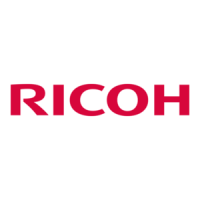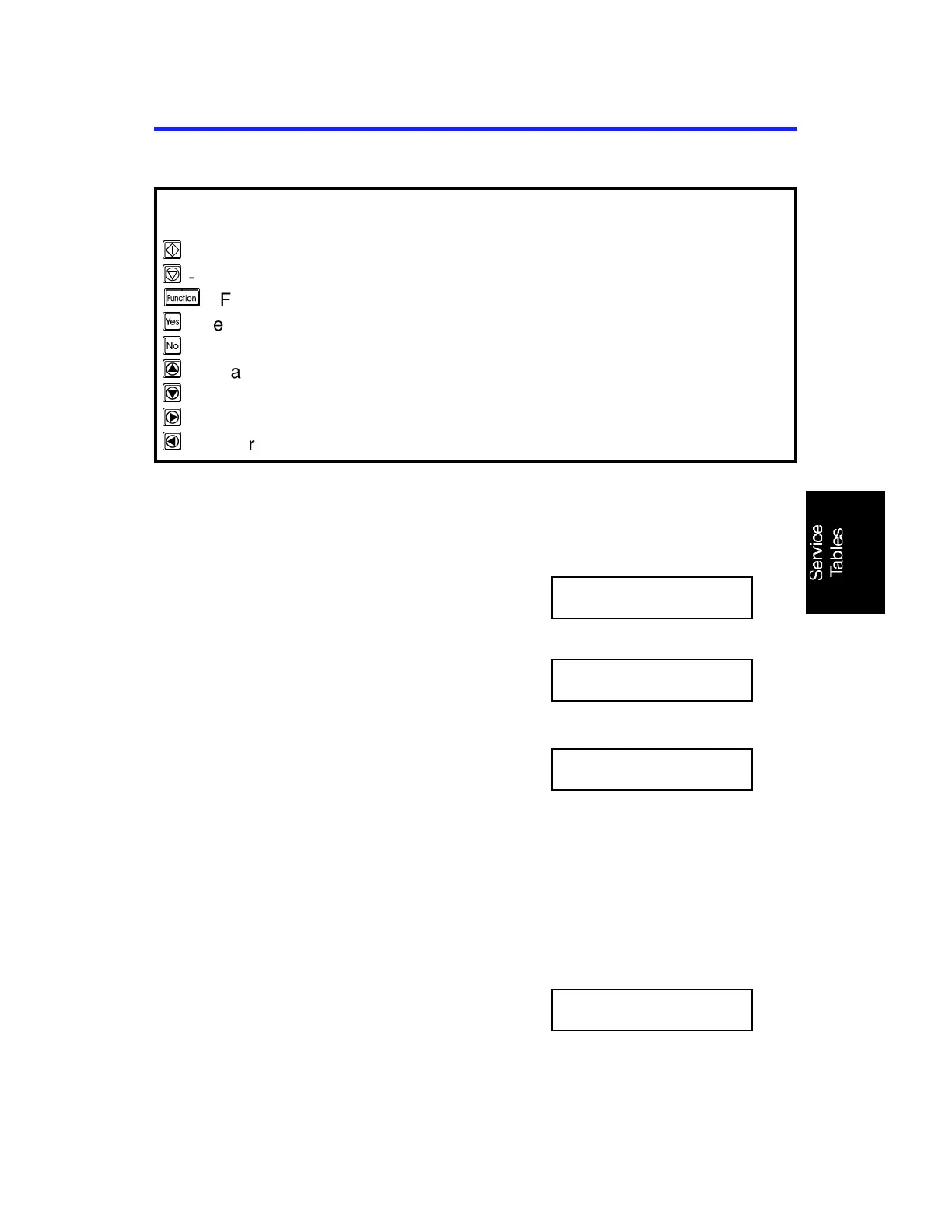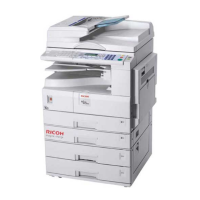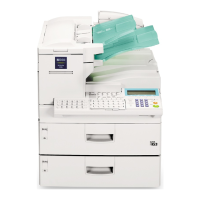4. SERVICE TABLES AND PROCEDURES
4.1. SERVICE LEVEL FUNCTIONS
In this section, frequently used keys are referred to with the following
symbols.
S
- Start key
s
- Stop key
FU
- Function key
Y
- Yes key
N
- No key
^
- Up arrow key
_
- Down arrow key
>
- Right arrow key
<
- Left arrow key
4.1.1. Bit Switch Programming (Function 01)
1. FU 6 1 9 9 5
then immediately Y
FUNCTION KPAD/NEXT
SERVICE FUNCTIONS
2. 0 1 Y
SYS DF : 0000 0000
BITSW 00: 0000 0000
Bit 7 is displayed at the left, and bit 0 at
the right.
3. Scroll through the bit switch menu: * or
#
Example: To see the communication
switches : # × 3
Then scroll through the bit switches.
Increment bit switch: >
Decrement bit switch: <
Example: Display bit switch 3: > x 3
COM DF : 0000 0000
BITSW 00: 0000 0000
4. Adjust the bit switch.
Example: To change the value of bit 7,
press 7
COM DF : 0000 0000
BITSW 03: 1000 0000
August 7th, 1995 SERVICE TABLES AND PROCEDURES
SERVICE LEVEL FUNCTIONS
4-1



